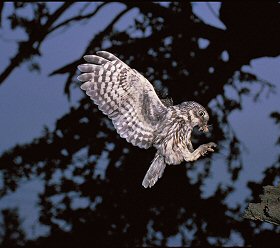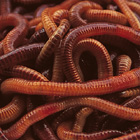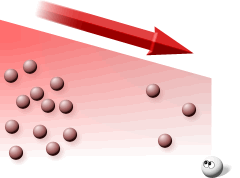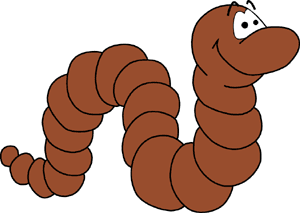Wow! The Wonders of an Earthworm
How Diffusion Allows an Earthworm to Breathe

Ah … this earthworm is about to become a tasty snack!
But even if the
bird doesn’t eat the earthworm right away,
our earthworm friend will probably die if he stays
in the sun for
too long. Why?
The secret
to
staying alive is in his skin …
and a scientific process called diffusion.

Look closely
at the earthworm’s
skin. Does it look wet to you? Maybe a little bit moist? You
might already know that we find earthworms in damp soil, and perhaps
you have seen earthworms crawling on the ground right after a
hard rain or a major storm. Why do
you think this is? If you
answered that an earthworm needs to live in a damp environment – but
not too damp – you’re right! To understand the reason why, though, we
need to look a little more closely.
Earthworms certainly
don’t look
like humans – and one difference between earthworms and us is the way
that we breathe. Earthworms need oxygen just like humans, but
they don’t have lungs like we do. They have a special skin that
allows them to “breathe” oxygen right through it. How does this
work? It has to do with a science concept called diffusion.
Diffusion
is the movement of
molecules from an area of higher concentration (think crowded) to an
area of lower co ncentration (less crowded). Diffusion
allows an earthworm to get the oxygen it needs to survive.
Remember, an earthworm needs oxygen just like we do, and its cells are
constantly using oxygen to perform cell processes. This means the
amount of oxygen inside the earthworm will always be less (lower
concentration) than the area outside of the earthworm (higher
concentration). This is great news for the earthworm! New oxygen
from the environment is constantly diffusing into the cell to replace
the oxygen that is used up.
ncentration (less crowded). Diffusion
allows an earthworm to get the oxygen it needs to survive.
Remember, an earthworm needs oxygen just like we do, and its cells are
constantly using oxygen to perform cell processes. This means the
amount of oxygen inside the earthworm will always be less (lower
concentration) than the area outside of the earthworm (higher
concentration). This is great news for the earthworm! New oxygen
from the environment is constantly diffusing into the cell to replace
the oxygen that is used up.
Okay, you get diffusion. The
same process that keeps oxygen coming in to the earthworm also keeps
carbon dioxide going out, getting rid of this waste for the earthworm.
But we still haven’t answered our question about why the earthworm
needs to live in a damp environment.
A moist
surface is necessary for
oxygen to be absorbed and carbon dioxide to be given off. The
worm’s skin is protected by a thin cuticle and kept moist by a slimy
mucus. This lets it absorb the oxygen it needs and expel carbon
dioxide. If a worm is dried up by the sun, it will die because
the exchange of gases can’t take place.
Well, why doesn’t an earthworm
just stay underground when it rains, then, instead of coming to the
surface? Not a bad idea – it definitely would stay moist!
Scientists aren't really sure of the answer. Some think too
much water is a bad thing, because that water takes the
place of valuable air in the soil. Air contains more oxygen than
water does, and remember, earthworms need oxygen. Without it, the
earthworm would suffocate! Other scientists, though, have
different ideas about why earthworms crawl to the surface after it
rains. These researchers say earthworms can
survive underwater for a little while, but come to the surface after
the rain because it is easier to move on a wet surface. Can you think of a way to test these
ideas?
Sounds like a good research
project! What we do know
is that earthworms require a certain balance of water to survive.
And now you know just how important
the process of diffusion is for an earthworm – and why an earthworm
needs to stay moist in order for diffusion to take place.
For a
diffusion challenge, please go to:
More About
Diffusion
For more
detailed information on this topic, please go to:
Biology
Concept Paper
For more fun facts about worms, check out
MISEP student Ryan Lenet's
webpage
Picture credits:
Earthworms
www.elifisher.tripod.com/sitebuildercontent/
sitebuilderpictures/earthworms2.jpg
Bird with
Earthworm www.songbird.com
Diffusion
www.blobs.org/science/diffusion/imgs/concgradient.gif
Cartoon
Worm www.hiehs.nih.gov



 ncentration (less crowded). Diffusion
allows an earthworm to get the oxygen it needs to survive.
Remember, an earthworm needs oxygen just like we do, and its cells are
constantly using oxygen to perform cell processes. This means the
amount of oxygen inside the earthworm will always be less (lower
concentration) than the area outside of the earthworm (higher
concentration). This is great news for the earthworm! New oxygen
from the environment is constantly diffusing into the cell to replace
the oxygen that is used up.
ncentration (less crowded). Diffusion
allows an earthworm to get the oxygen it needs to survive.
Remember, an earthworm needs oxygen just like we do, and its cells are
constantly using oxygen to perform cell processes. This means the
amount of oxygen inside the earthworm will always be less (lower
concentration) than the area outside of the earthworm (higher
concentration). This is great news for the earthworm! New oxygen
from the environment is constantly diffusing into the cell to replace
the oxygen that is used up. 